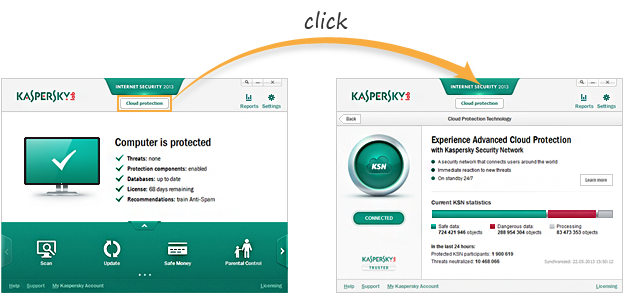How to create an interactive software simulation in PowerPoint
PowerPoint is a great tool for creating interactive software simulations, thanks to its hyperlinks, animations and triggers. If you want to upload the created simulations to the Web, you just need to convert PowerPoint to Flash or HTML5 using iSpring Suite.
Let us start by creating the software simulation in PowerPoint. Each slide of this interactive PowerPoint presentation will represent a screenshot of your program.
First, make the screenshots of your program. There are three ways you can do this, depending on your software and preferences:
- 1
Use the PrintScreen function on your keyboard (usually abbreviated as PrtScn or something similar). Want to take a screenshot of a single window? Use the key combination Alt+PrtScn. Then paste the image into an image editor such as MS Paint, or simply use the Windows logo key+PrtScn to save automatically to a file.
- 2
In later versions of Windows (starting with Vista), you can use the Snipping Tool for more advanced screen capturing.
- 3
In PowerPoint 2010 and later, you can simply use Ins ert → Screenshot.
When you have accumulated a library of screenshots, place them on the slides to match the appearance of the program.

Step 1. Add Navigation
The easiest way to make your software simulation interactive is to make all buttons and links clickable. Each button and link opens a certain slide that represents the corresponding screen of your program.

To make this possible, use PowerPoint’s hyperlinks as described in the three steps below.

Here’s how you can create an interactive button:
- 1
Create a Rectangle shape of the same size as the button and place it on the button.
- 2
Make the shape transparent by selecting No Fill in Shape Fill and No Outline in Shape Outline.
- 3
Right-click on the shape and select Hyperlink. The destination of the hyperlink is the screenshot of the window that appears in the program after clicking that button.
After you publish the presentation with iSpring Suite, this button will be clickable and will take the viewer to the right screen, simulating the environment of your program.
Step 2. Add Notes and Tooltips to the Software Simulation
Clickable hyperlinks will make your simulation interactive. Now we are going to add useful information to your software simulation so that your client will be able to learn as much as possible.
You can use tooltips to inform viewers what each button does and when it should be used.
Create Interactive Tooltips:
- 1Click Shape on the Insert tab of the PowerPoint ribbon and ins ert a rectangular tooltip shape.
- 2
Insert your message in to the field.

Add animation to your tooltip to make it more effective. For example, you can se t the tooltip to appear a few seconds after the start of the slide. In this case, you let users explore the screen by themselves, then prompt them at some point to perform some required action.
Add Notes:
In the notes, you can describe additional features and give comments.
- 1 On the Ins ert tab, click Shape and insert a rectangle shape in to the slide.
- 2
Ins ert your message in to the shape.

Link all the following screens in the same way.
The software simulation should demonstrate the atmosphere and tone of your program and provide necessary comments and details.
When you are satisfied with the look and feel of your simulation, convert it to a web-friendly format so you can upload it to the Web and/or Learning Management System or send it by email. Take all the guesswork out of sharing your PowerPoint by publishing to the combined Flash & HTML5 format using iSpring Suite.
Want to share your software simulation on the Web fast and easy? Use iSpring Cloud hosting and sharing service and share your simulation via shortlink, email, or social media, or embed it right on your website or blog using an embed code.
Check out this sample simulation embedded on this webpage using iSpring Cloud: